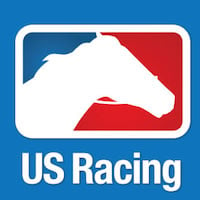Seconds before the gates opened for an early renewal of the Breeders’ Cup Turf (G1), NBC host Dick Enberg said, “There’s just something about a long race on the grass.”
He got that right.
A 1½-mile turf marathon lasts 2½ minutes and unfolds gradually. Unlike on dirt, where early speed usually rules, grass races are run back to front, with the final quarter of a mile faster than the first. Many winners come from behind, which is how the inaugural Turf produced a shocker in 1984. French shipper Lashkari, a 53-1 shot, surged from seventh to edge reigning Horse of the Year All Along. Forty years later, his $108.80 win price is still the biggest in the race’s history.


There have been many other Turf upsets -- 42-1 Miss Alleged in 1991 and 27-1 Better Talk Now in 2004 come to mind. Over the years the winners have been a mix of favorites, mid-priced horses and stunners from England, Ireland, France, Canada and the United States. Front-runners, stalkers and deep closers have had their moments in a race whose forerunner began 72 years ago in, of all places, suburban Maryland.
Air travel for racehorses was relatively new when Laurel Park staged the Washington, D.C., International, a 1½-mile grass race, in October 1952. This revolutionary venture, like the Breeders’ Cup, was a hit from the start. Its debut went to England’s Wilwyn, and soon it became an autumn destination for stars from North America and Europe, with even a few from Russia.
The International lasted until 1994, when ironically the concept it spawned helped to drive it out of business. The popularity of the Breeders’ Cup Turf, run only a few weeks later, severely diluted the quality of the International. It was dormant until 2005 before returning with greatly diminished prestige.
The Turf’s early editions were compelling and helped sell the Breeders’ Cup worldwide. English filly Pebbles shot up Aqueduct’s rail to win in 1985. The next year, French superstar Dancing Brave was called invincible before running fourth behind Manila at Santa Anita.
Although America swept the Turf from 1986-89, that never happened again. It was inevitable that the Old World would dominate its game, and it holds a 26-15 victory edge over North America (there was a dead heat in 2003 between California’s Johar and Ireland’s High Chapparal).
Ireland’s Aidan O’Brien (seven wins) leads the trainers, ahead of England’s Michael Stoute (four) and France’s Andre Fabre (three). Tied with five atop the jockey standings are Englishman Ryan Moore and Italian Frankie Dettori, based in the U.S. after 36 years in England.
The Euros won the last four Turfs and eight of the last nine. Will that trend change this year?
The absence of Prix de l’Arc de Triomphe heroine Bluestocking, whose season is over, will help. The Oct. 19 Champion Stakes at Newmarket siphoned off stars Economics, Calandagan and Los Angeles, who all will pass on Del Mar. So will O’Brien’s Auguste Rodin, last year’s Turf hero, who will await the Nov. 24 Japan Cup, his career finale.
The top Euros are 2022 Turf champion Rebel’s Romance, 4-for-5 this year; Jayarebe, trained by two-time Turf winner Brian Meehan, and O’Brien’s Luxembourg, who has two Group 1 trophies.
America’s best is Far Bridge, a versatile 4-year-old colt coming off consecutive Grade 1 victories in the Turf Classic and Sword Dancer.


The writing team at US Racing is comprised of both full-time and part-time contributors with expertise in various aspects of the Sport of Kings.























